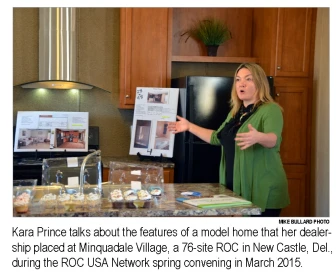Updated: Tuesday, January 5, 2016
According to a recent IBTS report, in 1998 there were more than 13,000 HUD-code manufactured home retail sales centers in the U.S. By the end of 2014, some 16 years later, there are now fewer than 4,000!
The decline is dealerships – both independent and company owned – followed a more severe decline in HUD-code home shipments, which dropped from 372,000 in 1998 to just 64,000 in 2014. 
The source of the problem is largely the bubble that was created by too much financing chasing too few qualified buyers. The collapse of chattel financing – the home only loans used to finance homes in communities by and large – in 2000 was a pre-cursor to the larger bubble that burst on all homeowners in the U.S. and elsewhere in 2008.
But, that’s not the subject I want to focus on today. My question is:
What does this trend – the decline of local retailers – mean for resident-owned communities?
In a word, it’s troubling.
The loss of retailers is troubling because in virtually every ROC, homeowners who wish to replace their home and homebuyers looking to place a home on a vacant site are relying on a local retailer. When they close, you travel farther to find a home and workers travel farther to service the home. And, your choices in terms of who you deal with get reduced.
None of that is good for consumers.
Private commercial owners of communities are combating (and frankly contributing to the decline) by opening their own sales centers. That’s a possibility for large ROCs – like Medvil in Goffstown, N.H., with 301 homes and a real estate sales service run out of their community center – but that may not be an opportunity for a smaller community with fewer sales.
There are nonprofits getting into providing factory-direct homes through a national network called Next Step. I am a big support of nonprofits entering the home sales market because getting homes through reputable dealers – those who sell good quality homes and set them properly – is critical to the long-term performance of the house itself.
With this decline in retailers, the need for in-fill homes on vacant sites, and the interest by many to replace their older homes, it’s no surprise that help with this aspect of community ownership was raised up as a strategic issue in our planning process. Priority #4 is “Produce resources to help ROCs fill vacant sites.”
My first focus is on home financing in all ROCs. That’s essential for in-fill as well as sales of existing homes. From there though, we need to get on to looking for creative ways to fill vacant sites. It’s a job that’s become more difficult with fewer retailers. So, if you have one, please do what you can to work cooperatively. And, keep good notes. I want to hear all about your experiences in filling vacant sites.
Do you have some things you’re doing to fill sites? Please comment below!
Thank you.
